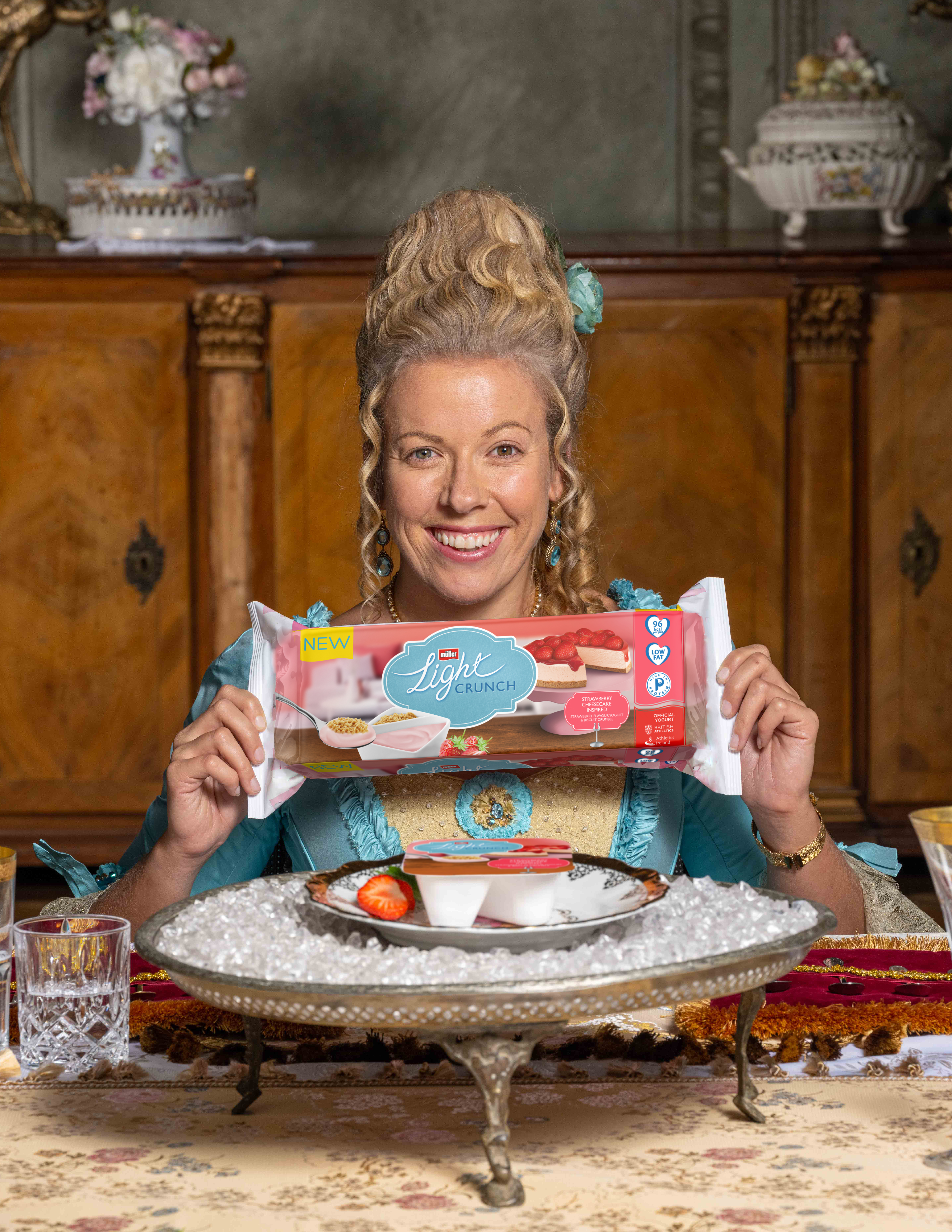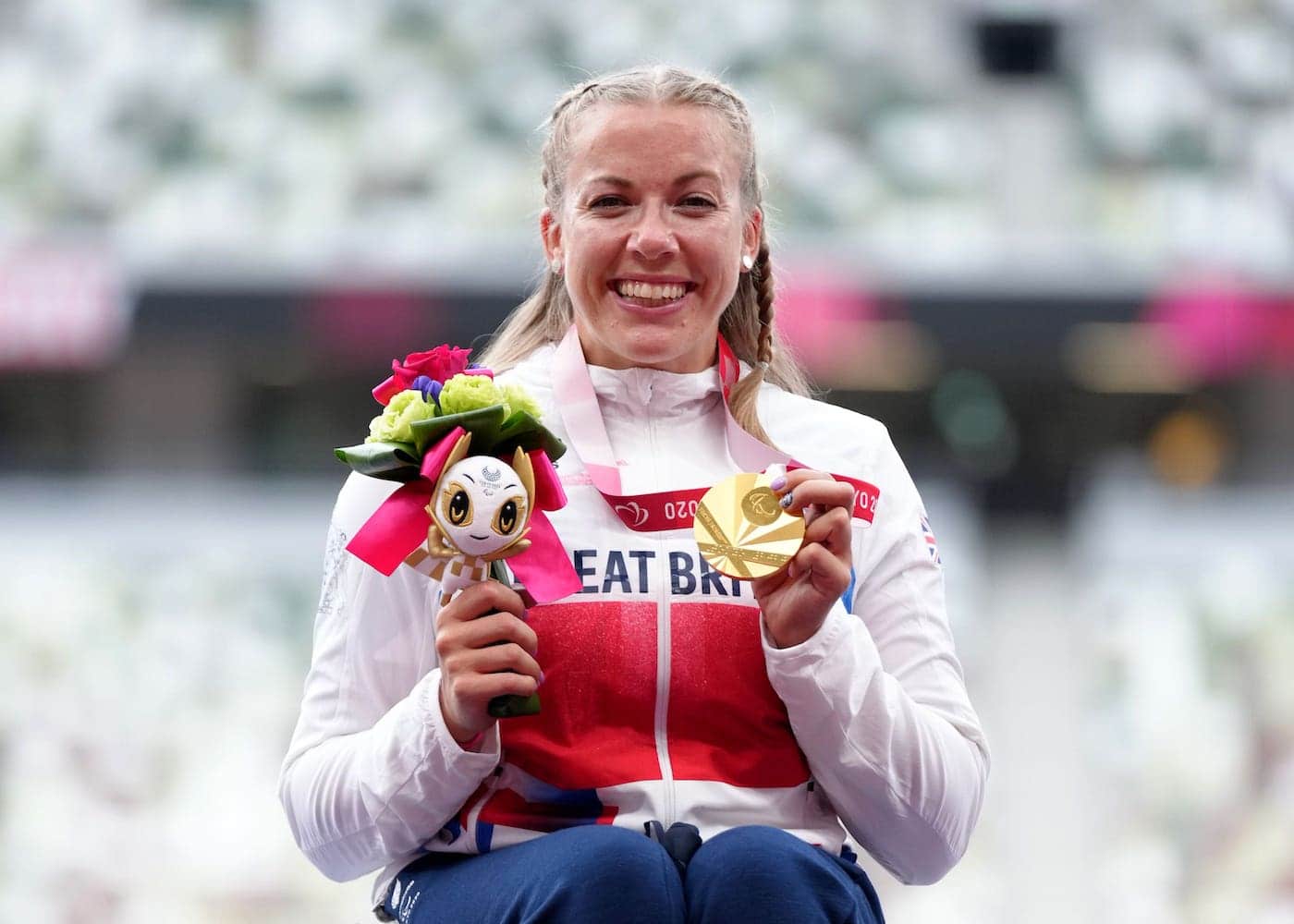With no less than five world records, seven Paralympic gold medals, and 12 world championship titles, Hannah Cockroft – one of Britain’s most successful athletes ever – is finally a little bit comfortable with the role model label.
“I used to really hate it when people said, ‘Oh you’re my role model, you’re my inspiration’.
I’d always think, ‘I’m just living my life!’ But if all I’m doing is living my life and they see that as something to look up to, then actually that is a massive privilege,” says the 29-year-old wheelchair racer, who picked up two golds in Tokyo in her T34 category – the 800m and 100m, smashing her own world record in the process.
But that’s the thing about disability; people need to see it represented in every walk of life – from the racing track in major sporting events to TV, film and media in a normal, everyday way that doesn’t necessarily focus on the disability itself.

“I had a strange perception of my disability growing up, I didn’t know anyone else who had a disability until I was 12, so I just always saw myself as different and I didn’t really know why.
I was never treated differently, I lived in a very able-bodied world, I just struggled with a few things,” Cockroft says.
She doesn’t remember ever seeing a wheelchair on TV – “Nothing! I never saw anyone with a disability – and I was born in 1992!” – which really contributed to how she felt about her wheelchair growing up.
Her disability was caused by two cardiac arrests at birth leaving her with brain damage, damage to her hips, legs and feet and issues with fine motor skills, balance and mobility.
“I hated my wheelchair – hated it,” she says, “because I felt it made me look different from my friends and family.
You wouldn’t see me sat here in it if I hadn’t have found sport, I would have walked her, I would have found a way.”
Those who’ve seen Cockroft sprint around the track will be used to seeing her in a chair, but she can walk around her house and local town.
“I can’t walk for very long, or far, or quickly,” she explains. And as a child and teenager, she tried to cope without a wheelchair at all.
“Actually, by avoiding my chair I took away my own independence, and that’s what it is to me now – my independence. Whether I’m in this one [an everyday chair] or whether I’m out on the track, I can do everything myself.

“I hope there are some kids out there who see that, and it helps them accept it.
As much as society paints disability as the worst thing ever and, ‘Oh I’d hate to be disabled’, it’s really not!
You just have to find your coping mechanisms and accept that this is what you are and you can absolutely do everything if you just accept the help. My help was the chair.”
Now, she says, her chair feels like a part of her – and starring in a new Müllerlight campaign felt like an important step in disability representation.
“It was incredible. You’re seeing a wheelchair user in an advert, and it’s not about disability, it’s about ‘having it all’ – it’s about yoghurts!” Cockroft says. “I’m in the biggest dress ever, it’s so heavy, and it was just a situation that you’d never put a disabled person in but Müller put me there, and that’s what representation is – it’s showing that as a disabled person, you can do everything.”

London 2012, Cockroft’s first Paralympic Games, really helped boost the profile of para-athletics in the UK, and after the huge numbers in crowd support (“People kept saying, ‘You won’t be ready for the noise’, and we weren’t!”) and the buzz around the Rio 2016 Paralympic Games, the delayed Tokyo 2020 event – with no crowds due to Covid restrictions – was much harder than she imagined.
“We obviously knew there would be a lot of restrictions, but when we got into the stadium it was absolutely silent. I thought I’d be ready for it, but I really, really wasn’t.
Obviously, there was nothing that could be done about it, but I don’t cry and I cried at the end of that race,” Cockroft recalls. “You kind of do it for that buzz, and it just didn’t feel like the Games had happened, almost.”
Mentally, that was tough – especially after five years of lead-up and one particularly hard year before it when the pandemic struck.
“It’s definitely scary when you see people like you dying [a significant percentage of people who died from Covid had disabilities and underlying health conditions].
For a long time, me and Nathan [Maguire, her boyfriend, who is also a wheelchair athlete] didn’t leave the house,” she says.
The pair met on a training camp ahead of Rio, although Cockroft reveals with a laugh: “He actually says he met me in 2012, he’s got a picture of him asking for my autograph – I don’t remember so I don’t count that as us meeting!”
They’ve found accessibility as a couple particularly challenging. “We’ve had taxi drivers not let us in the taxi together, bus drivers not let us on a bus [due to space issues].
Just because we have a disability doesn’t mean we have to have an able-bodied carer with us all the time.
Imagine getting on a bus with your girlfriend and you were told you’ve got to sit three buses back.
“It’s already pretty difficult getting two wheelchairs around anywhere, so when people try and stop you being together… I know how to assist him and he knows how to assist me, so we work perfectly as a team.”
Something Cockroft is really passionate about is ensuring youngsters get access to sport if they have a disability.
She may be known as ‘Hurricane Hannah’ now, aiming for the Paris 2024 Paralympic Games and beyond (“As long as my body can keep doing what it’s doing, I want to carry on”) but she was excluded from PE at school.
“I think things are changing, but I still have kids tell me that they’re not allowed to do PE at school.
If you don’t have the parental support or financial support [to visit a specialised club], if you’re also missing sport at school because you’ve got a disability, you’ve got no way in, and that’s what worries me,” she says.
“A race chair off the shelf costs between £3,000 – £5,000 – it’s not money that my mum and dad had. I was lucky, I borrowed a chair and that’s what most kids do now.
I pass on my old chairs to my club in Leeds, so there are several other Hannah Cockroft’s whizzing around!”
But there are less than 15 wheelchair racing clubs in the UK, she says. “I want to make it so you just go to your local club, get a race chair and give it a go,” says Cockroft.
“Even when I had my own race chair, I wasn’t allowed to push round with the runners – we need to change that.”
